Benchmarks
WinStone 2000 :-

Now on to what we all care about, 3DMARK Scores. We used a Standard Asus GeForce 64MB Graphics card (running at Standard AGP and not clocked, no special playing or tweaking) we wanted to see what sort of benchmarks Jo average would get. (Another problem is the fact that I *still* don’t have a GeForce Ultra for my test rig *grin*)
There isn't a massive increase in 3dmarks, even though it is affected by memory bandwidth and bus speeds. You should see around 2% maybe more increase. Do you remember the first time you saw a 10K post with 3DMARK? Yes it was the Intel guys with their massive FSB. Until now, AMD Bites back. Now I have seen loads of people in
the '10K Club' Most of them are AMD guys.
3DMark, 1024*768 (16bit) :-
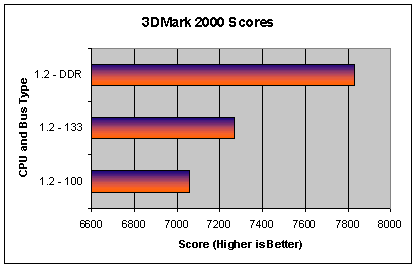
One important note is to look at the results we got with the KT133A boards, impressive eh? Well yes, this shows how well Via has done with the chipset implementation, so all you guys saying VIA suck well eat it ;)
Another thing to notice is the Si-Soft Scores, which aren’t as high as you might have expected. Yes they aren’t "massive" but it is a new technology. These results I have been told are right and there is nothing to worry about. Overall this shows that the first generation of DDR needs some work to increase its gain. We will probably see this in DDR -2
Si-Soft Dhrystone (CPU Benchmarks) :-
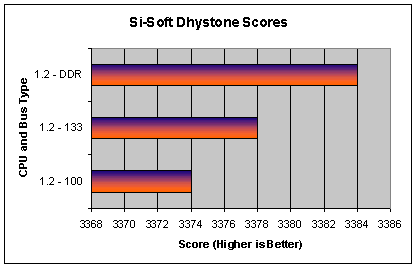
N.B The Dhrystone benchmark tests the number of instructions the CPU can handle. This is measured in MIPS (Millions of Instructions Per Second).
SiSoft - Whetstone
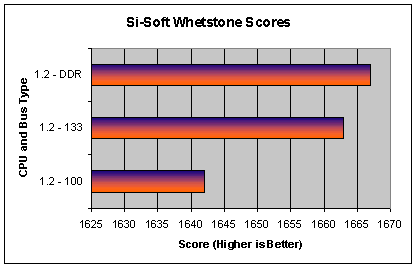
N.B Whetstone benchmark tests the number of floating point instructions the CPU
can handle. This is recorded in MFLOPS (Millions of FLoating Point instructions per Second).
SiSoft - Memory Benchmarks FPU
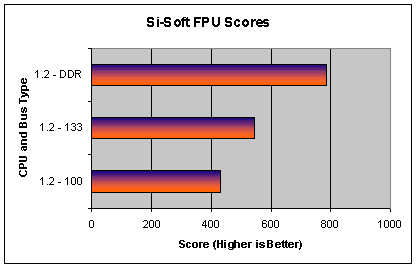
SiSoft - Memory Benchmarks ALU
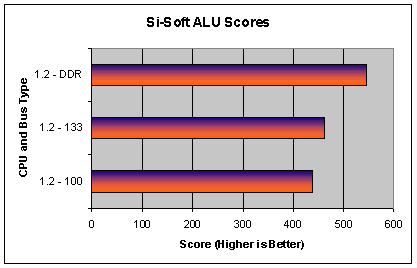
Overall the gaming scores weren’t as high, or gained as much, as you would expect. You could possibly see a massive increase with the Nv20, but the question of costs and implementation comes to mind.
One thing you also need to note if you are a gamer. You don’t NEED speed, you need FPS, there is a difference. Lets put it this way... If you had a frame rate of 120FPS, which dropped to 45, and then shot up again, this is not much good. Even though you make like having this high frame rate, I don’t! You want to have a nice stable FPS. If you could get your FPS to stay at 60 in everything you play in then that’s the best way: it means that you don’t need to spend lots of money on new graphics cards all the time. Also remember that your eyes may not be able to notice
the 120 FPS, but you will be able to see the dropping.
The final set of benchmarks which we ran were Si-Soft, even thought they don’t show that much of a change, it is still a change, and in essence this is what we need, You need to balance up the cost effectiveness of this though. Do you want to ditch your PC133 Crucial cas2 for this small increase?? Well I wouldn’t! Wait until DDR-2 is out.
There is no doubt on the matter that DDR does increase you system speed. It isn't a 'need', it is a 'lust' though. You would do better buying more PC133 cas2 ram in my eyes. Unless you're a graphics guy, or need a power-house of a workstation









